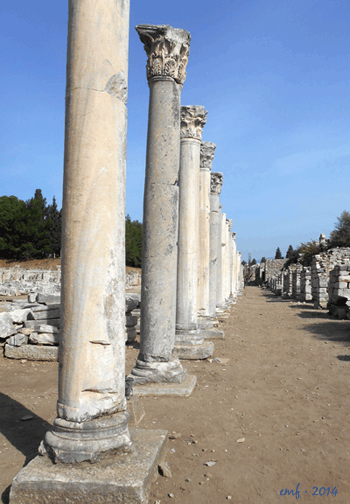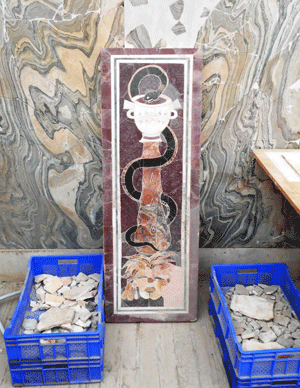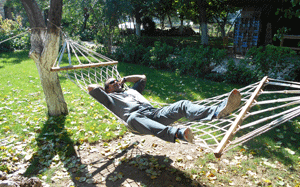Archeology 101
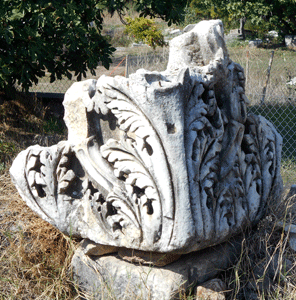
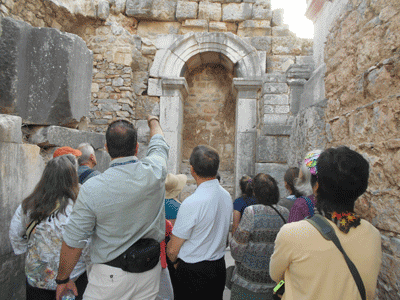 The fantastic collections in the Anatolian Civilizations and Antalya museums whetted my appetite for exploring some actual archeological sites, but the first ancient city we visited, Aphrodisias, still took my breath away. Its history can be traced back to the Bronze Age, but by the third century BCE it became an important center for the cult of Aphrodite. One of the foremost cities of this age, Aphrodisias was a highly developed commercial center with a world-famous sculpture school, exporting sculptures of beautiful white and blue-gray marble as far as Rome and North Africa. Heavy damage of the buildings during an earthquake in the 7th century hastened the decline of the city, and the area was eventually repopulated as the village of Geyre, early days largely forgotten; some amateur study of the site began in the late 19th century but systematic excavations didn’t begin until another earthquake in 1956 forced the village to move. In 1958 Ara Güler, a Turkish journalists, noticed some villagers sitting on a marble bench; he was shown many more beautiful pieces incorporated into local houses, and took many photos. Professor Kenan Erim of New York University saw them, and started excavations in 1961, continuing until his death in 1990. He is buried on the site of his life work, near the Tetrapylon connecting the major street to the sacred way to the sanctuary of Aphrodite.
The fantastic collections in the Anatolian Civilizations and Antalya museums whetted my appetite for exploring some actual archeological sites, but the first ancient city we visited, Aphrodisias, still took my breath away. Its history can be traced back to the Bronze Age, but by the third century BCE it became an important center for the cult of Aphrodite. One of the foremost cities of this age, Aphrodisias was a highly developed commercial center with a world-famous sculpture school, exporting sculptures of beautiful white and blue-gray marble as far as Rome and North Africa. Heavy damage of the buildings during an earthquake in the 7th century hastened the decline of the city, and the area was eventually repopulated as the village of Geyre, early days largely forgotten; some amateur study of the site began in the late 19th century but systematic excavations didn’t begin until another earthquake in 1956 forced the village to move. In 1958 Ara Güler, a Turkish journalists, noticed some villagers sitting on a marble bench; he was shown many more beautiful pieces incorporated into local houses, and took many photos. Professor Kenan Erim of New York University saw them, and started excavations in 1961, continuing until his death in 1990. He is buried on the site of his life work, near the Tetrapylon connecting the major street to the sacred way to the sanctuary of Aphrodite.
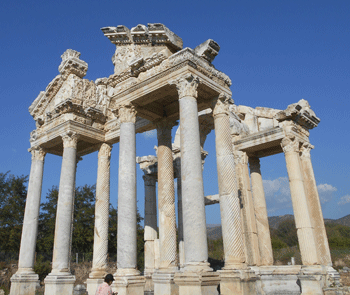 Aphrodisias is nowhere near as popular as other archeological sites in Turkey, but its extraordinary preservation, bringing the civic culture of the Greco-Roman world vividly to life, deserves attention. The central Temple of Aphrodite, even with only fourteen of its original forty Ionic columns standing, remains impressive. The Sebasteion, with its life-size marble reliefs depicting Roman emperors, Roman subject peoples, and mythological gods and heroes, is one of the most remarkable discoveries in Roman archeology. The Stadium, once seating 30,000 people, is the best-preserved of all ancient stadiums. Because of the high quality of the marble, reliefs and inscriptions carved into the buildings have also been preserved. Marble pieces from the earthquake-destroyed buildings and studies by the students of the sculpture school are piled up everywhere. The site includes a museum with many pieces taken from the excavations, as well as prints of Güler’s photos of the village. One can sit on the same marble bench he documented in 1958 while relaxing after the site tour.
Aphrodisias is nowhere near as popular as other archeological sites in Turkey, but its extraordinary preservation, bringing the civic culture of the Greco-Roman world vividly to life, deserves attention. The central Temple of Aphrodite, even with only fourteen of its original forty Ionic columns standing, remains impressive. The Sebasteion, with its life-size marble reliefs depicting Roman emperors, Roman subject peoples, and mythological gods and heroes, is one of the most remarkable discoveries in Roman archeology. The Stadium, once seating 30,000 people, is the best-preserved of all ancient stadiums. Because of the high quality of the marble, reliefs and inscriptions carved into the buildings have also been preserved. Marble pieces from the earthquake-destroyed buildings and studies by the students of the sculpture school are piled up everywhere. The site includes a museum with many pieces taken from the excavations, as well as prints of Güler’s photos of the village. One can sit on the same marble bench he documented in 1958 while relaxing after the site tour.
I’ve already described our visit to Hierapolis, which was the second of an intensive three-day excusion back into the Greco-Roman past. While Aphrodisias was surrounded by rich farmland and thrived as a commercial city, Hierapolis was more of a spa center, with the local Phyrgian hot springs providing water for the great baths. Several Roman emperors visited the city, including Hadrian, Caracalla (who bestowed sanctuary status to the town), and Valens. Pluto’s Gate, the area’s oldest local sanctuary, was a small cave filled with deadly carbon dioxide gas; priests sold birds to visitors to demonstrate the power of the deadly fumes and then served as Pluto’s oracles to answer questions. The later Christians evidently weren’t as keen on the medicinal properties of hot springs, filling Pluto’s Gate with stones and transforming the Roman baths into a basilica.
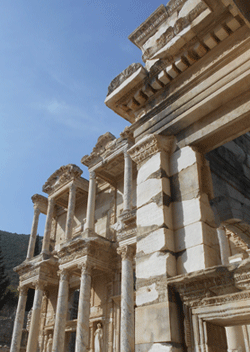 Next day, on to Ephesus. Mert made us get up early so we arrived just after the site opened, and we able to explore quite a bit of the excavations before the tour bus infestation. Having worked on this excavation himself, Mert’s knowledge of and enthusiasm for the site made the visit even more rich and memorable. Built in the 10th century BCE, the Ephesus had a long and storied history as a seaport, first as one of the twelve cities of the Ionian League in the Classical Greek era, greatly admired by Alexander the Great (whose offer to finance the completion of the temple of Artemis was declined by savvy Ephesians, claiming that it wasn't fitting for one god to build a temple to another), and later flourishing under Roman Republic control. Ephesus was famed for the Temple of Artemis, one of the Seven Wonders of the Ancient World, which was destroyed by the Goths. During the Byzantine period Emperor Constantine I rebuilt much of the city, but earthquakes and silting up of the harbor eventually diminished the city’s importance as a commercial center.
Next day, on to Ephesus. Mert made us get up early so we arrived just after the site opened, and we able to explore quite a bit of the excavations before the tour bus infestation. Having worked on this excavation himself, Mert’s knowledge of and enthusiasm for the site made the visit even more rich and memorable. Built in the 10th century BCE, the Ephesus had a long and storied history as a seaport, first as one of the twelve cities of the Ionian League in the Classical Greek era, greatly admired by Alexander the Great (whose offer to finance the completion of the temple of Artemis was declined by savvy Ephesians, claiming that it wasn't fitting for one god to build a temple to another), and later flourishing under Roman Republic control. Ephesus was famed for the Temple of Artemis, one of the Seven Wonders of the Ancient World, which was destroyed by the Goths. During the Byzantine period Emperor Constantine I rebuilt much of the city, but earthquakes and silting up of the harbor eventually diminished the city’s importance as a commercial center.
Ephesus is kinda like the Grand Canyon, or the Louvre: just too big to take in. It contains the largest collection of Roman ruins in the eastern Mediterranean, with only about 18% of the city excavated. The enormous outdoor theatre, believed to be the largest in the ancient world, and the partially reconstructed facade of the Library of Celsus, which once held nearly 12,000 scrolls, give some idea of the original splendour of the city. Public latrines — once part of the Scholastica Baths — and the Marble Road, with its separate pedestrian platform, leading from the theatre to the library show the details of the daily life of its citizens.
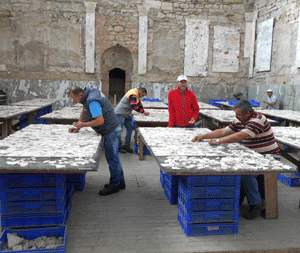
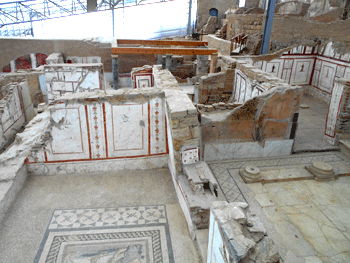 Excavations of this 5,000 year old site started in 1869, and continue today through the auspices of the Turkish Ministry of Culture and Tourism. The current perspective lies more on the care and preservation of already discovered buildings rather than further excavation. Among the more recent projects is the excavation and reconstruction of the terrace houses opposite the Hadrian Temple. These are housed in a protective structure and open to view with a separate entrance ticket; most visitors don’t bother to tour the area, which is their loss as it was my favorite part of our Ephesus visit. We were greeted by the group of archeologists working with tables covered with mosaic pieces, a giant historic jigsaw puzzle. Walkways led us around the site, where we could peer down into the lower floors of several attached houses and look at the lovely wall frescos and mosaic floor patterns of the living and dining room areas. Upper floors, now collapsed, held bedrooms, while interior courtyards would have let in light. Being able to peek into the homes of Roman-era families gave a completely new perspective into the world of these ancient cities.
Excavations of this 5,000 year old site started in 1869, and continue today through the auspices of the Turkish Ministry of Culture and Tourism. The current perspective lies more on the care and preservation of already discovered buildings rather than further excavation. Among the more recent projects is the excavation and reconstruction of the terrace houses opposite the Hadrian Temple. These are housed in a protective structure and open to view with a separate entrance ticket; most visitors don’t bother to tour the area, which is their loss as it was my favorite part of our Ephesus visit. We were greeted by the group of archeologists working with tables covered with mosaic pieces, a giant historic jigsaw puzzle. Walkways led us around the site, where we could peer down into the lower floors of several attached houses and look at the lovely wall frescos and mosaic floor patterns of the living and dining room areas. Upper floors, now collapsed, held bedrooms, while interior courtyards would have let in light. Being able to peek into the homes of Roman-era families gave a completely new perspective into the world of these ancient cities.
These and several other Turkey destinations are hugely important sites for anybody interested in ancient cultures, history, and archeology (Turkey’s most popular beer, Efes, is named after one of these sites!) and there are tons of web sites (also books, of course!) with photo galleries and detailed information. (Also books, of course!) Here are some useful links:
- » Aphrodisias.com
- » Sacred Destinations: Hierapolis (Pamukkale), Turkey
- » Turkish Odyssey: Efes
- » The Museum of Unnatural Mystery: The Temple of Artemis at Ephesus
- » Smithsonian: Exploring Ancient Ephesus
Return to Turkey 2014 Index

